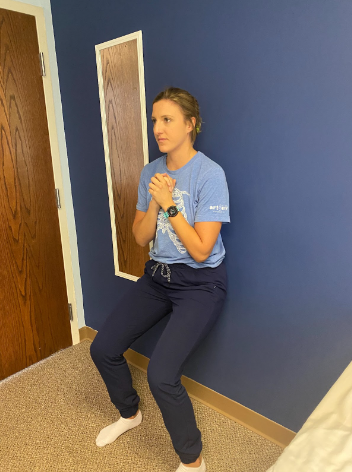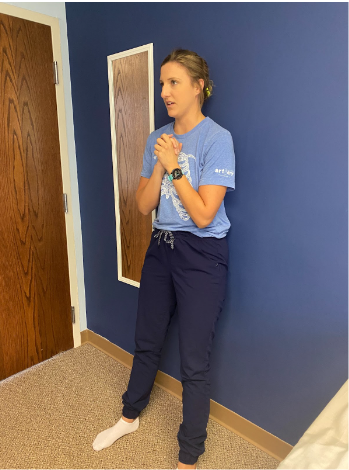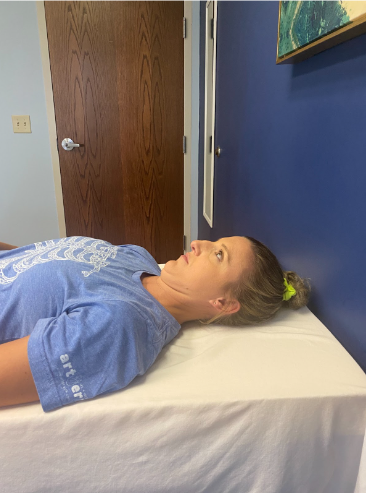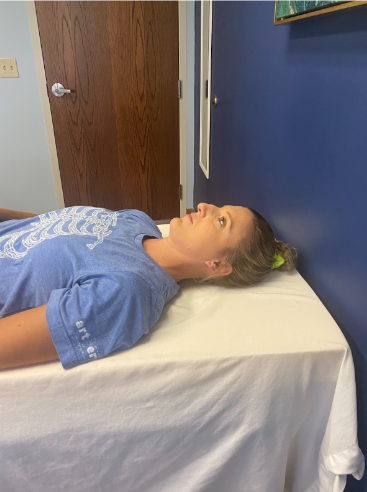Easy Prolapse Solutions
Women everywhere find themselves wondering...Can I fix my prolapse? Short answer, yes. You can work on various behavior and habit changes that will help reduce your symptoms, whether those are feelings of vaginal heaviness, pressure, incontinence, or low back pain. Many women experience more severe symptoms after strenuous exercise, after running, or at the end of the day. Monitoring these symptoms over the course of time, in conjunction with interventions to address functional pressure changes in your intra-abdominal cavity will allow you to seek control of your body. These easy prolapse solutions are the best way to help fix your prolapse.
Learn more about prolapse, what it is, how it happens, and how to figure out if you have it by visiting our Prolapse-related articles.
Download FREE copy of 5 Basic Tips to Keep your Prolapse from Getting Worse
Download NowWhat Can I Do To Fix My Prolapse?
Treatment for prolapse is tailored to each person’s individual needs. A subset of individuals may have pelvic floor muscle overactivity—overly tight and tense pelvic floor muscles. This arises from the constant need to provide support to the abdominal cavity and can develop for a multitude of reasons. Some clients do not have to have overactivity addressed if it is not an issue for them, but rather they can move into other phases of intervention including pressure management, strengthening and activity modifications.
Address muscle overactivity:
This can be addressed with manual physical therapy treatment of the external and internal pelvic floor muscles, including trigger point release to improve blood flow and facilitate relaxation in order to make the muscles more efficient for contraction/strengthening. The manual assessment and treatment must be completed by a licensed physical therapist. Overactivity can also be reduced with relaxation training which primarily includes breathing training (see blow).
Diaphragmatic Breathing training:
Across the board it is initially important to learn and feel what proper diaphragmatic breathing feels like. This can help you become more attune with managing the pressure placed on your pelvic floor.
Diaphragmatic belly breathing/360° breathing. This is a form of breathing where you expand at the rib cage in all directions, allowing contraction of the diaphragm to create stretching and lengthening along the pelvic floor.
Deep breathing with legs up the wall. This allows gravity to assist in stretching the pelvic floor muscles.
3. Manage breathing with Lifting/Exercise:
a) Be sure to exhale with the exertional portion of your exercise in order to avoid creating excessive pressure in the abdominal cavity.
Transverse abdominis strength/coordination:
The transverse abdominis helps to maintain pressure and stability in the intra abdominal cavity during movement.
Transverse Abdominis March
Gently draw in at your belly button until you feel a slight tensioning under your finger tip. Alternate marching left and right leg up until your knee and hip reach 90°. Repeat 10 lifts on each leg. Repeat for an additional set.
2. Hooklying Hip adduction + Pelvic Floor Muscle Contraction
Gently draw the belly button in towards the spine. Complete pelvic floor contraction by squeezing and drawing upward through the vaginal canal. Squeeze the pillow for 6-10 seconds. Relax. Repeat for 8-10 repetitions.
3. TA + Pelvic Floor Muscle contraction with squat
Position yourself in a squatting position against the wall (Photo 1). Perform gentle kegel contraction by pulling upwards in the pelvic floor while coming into upright position (Photo 2). Repeat for 2 sets of 10 repetitions.
If you feel increased pressure or heaviness during any of the following exercises, please stop. They may not be appropriate for your specific situation and you may need additional guidance.
Manage constipation:
Constipation can contribute to pelvic floor issues like prolapse. Be sure to incorporate the recommended ~40 grams of fiber per day to maintain appropriate stool consistency and avoid constipation. Intake plenty of water on a daily basis. The normal recommended amount is half your body weight in ounces. (ie. if you’re 150 lbs, 75 ounces of water is recommended). Avoid straining while having bowel movements. Keep pelvic muscles relaxed as straining can reduce tissue integrity over time. Consider placing your feet up on the stool while on the toilet. There are also stools made specifically for comfortable toileting, such as the Squatty Potty.
Posture:
By positioning the body in a posture-friendly manner, you will be able to reduce pressure on the tissues in the intra abdominal cavity and as a result, reduce symptoms of prolapse. Consider each of the three tasks to address posture at the neck, mid-back and low back.
Chin tuck
2. Thoracic rotation:
3. Neutral pelvic position (posterior pelvic tilt increases muscle tone)
Abdominal fascia/bladder mobilization:
Additional manual therapy treatments for prolapse include fascial mobilizations and bladder mobilizations. Fascia, the connective tissue which encases organs, bones, muscles, and nerves attaches all the tissues in the body. When there are restrictions and limitations in fascial mobility this can create extra tension on surrounding structures making them less structurally sound. In the case of prolapse, many types of tissues play a role in keeping the integrity of bladder, uterine and rectal support.
Get Started in your journey to fix your prolapse today!
As a result of pressure management training, postural changes, activity modifications, and pelvic floor strengthening strategies—the symptoms of prolapse can finally begin to subside. With the decline in symptoms it is possible to see an actual reversal of the grade of prolapse.
The main priority to gauge improvement will be decline or (preferably) an elimination in your discomfort. As therapists, we are looking to see that your symptoms (vaginal heaviness, pressure, incontinence, low back pain, etc.) are coming on less frequently, with lower severity and duration. We are not necessarily looking to see if the organs go “back into place”, per se, though this can be the case in some patients!
I encourage you to work on some of the practical tips and solutions listed above to help you live your best and most comfortable life! These practical tips are helpful for day to day use, however, you may need the specific guidance from a Pelvic Floor Physical Therapist.
Here at Revitalize PT we are able to provide 1:1 private treatment sessions where we can give personalized feedback on performance and progress. It is important to get this attention and guidance in order to develop proper kegel training and exercise prescription based on your specific impairments. Please consider reaching out if you are experiencing symptoms of pelvic organ prolapse.
Resources:
Dressendorfer R; Richman S; CINAHL Rehabilitation Guide, EBSCO Publishing, 2017 Oct 27 (Clinical Review - CEU, exam questions)
Snook AG; Richman S; CINAHL Rehabilitation Guide, EBSCO Publishing, 2018 May 25 (Clinical Review)










